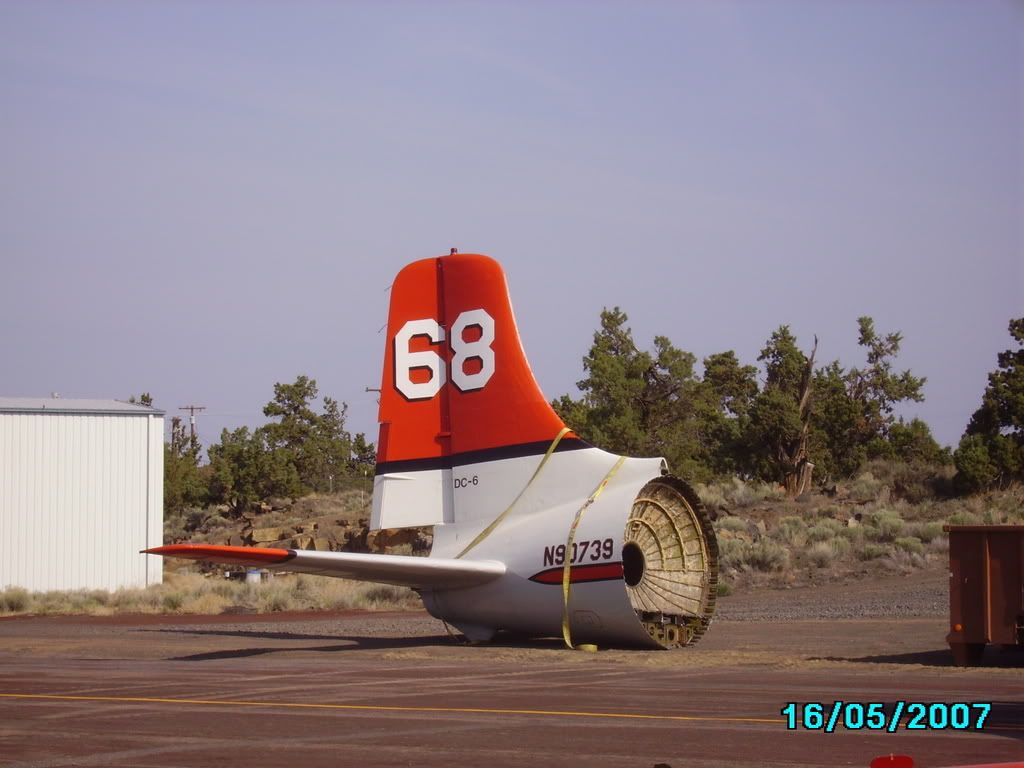Scott,I agree that it was very sad to see what happened to Tanker 68,and also to the DC-7 Tanker 67,which shared the same fate.There had been some talk of saving at least the cockpit section of 68 for the American Ailines Museum,but that fell through for some reason.It's too painful to post pictures of the actual cutting up of the DC-6,but I think that the picture below sums it up.
As to the DC-6 vs. the DC-7 or P2V exhaust note.The DC-7 and P2V's have R-3350 Turbo-Compond engines and their exhaust is routed to 3 PRT's that make good mufflers.The DC-6 has relatively short stacks on their R-2800's that put out a real snarl when under a lot of power.The S-2's with R-1820's,or T-28's,for that matter are also pretty snarly.When I flew the R4D-8/C-117D Super DC-3 on the Alaska Fish Haul,it also sounded snarly compared to DC-3/C-47 types because it had stacks similar to the DC-6 instead of collector stacks like the regular '3.
When I flew Twin Beeches out of Miami International,our loading ramp was in "Corrosion Corner" just northwest of the approach end of Runway 9L.Both Bellomy-Lawson and Trans Air Link were still operating DC-6B Freighters at that time and Trans Air Link had one DC-7CF.They flew freight to the islands,mostly,and liked to depart very early in the morning when it was relatively cool and there was an onshore breeze.
I couldn't see the DC-6 or 7 well enough to tell whch it was when one of them taxied into position at night,but it was obvious when the went to max power.The DC-6 would snarl it's way down the runway and the DC-7 sounded more like a diesel locomotive with a sort of a "Wumma-Wumma-Wumma" sound to it.






